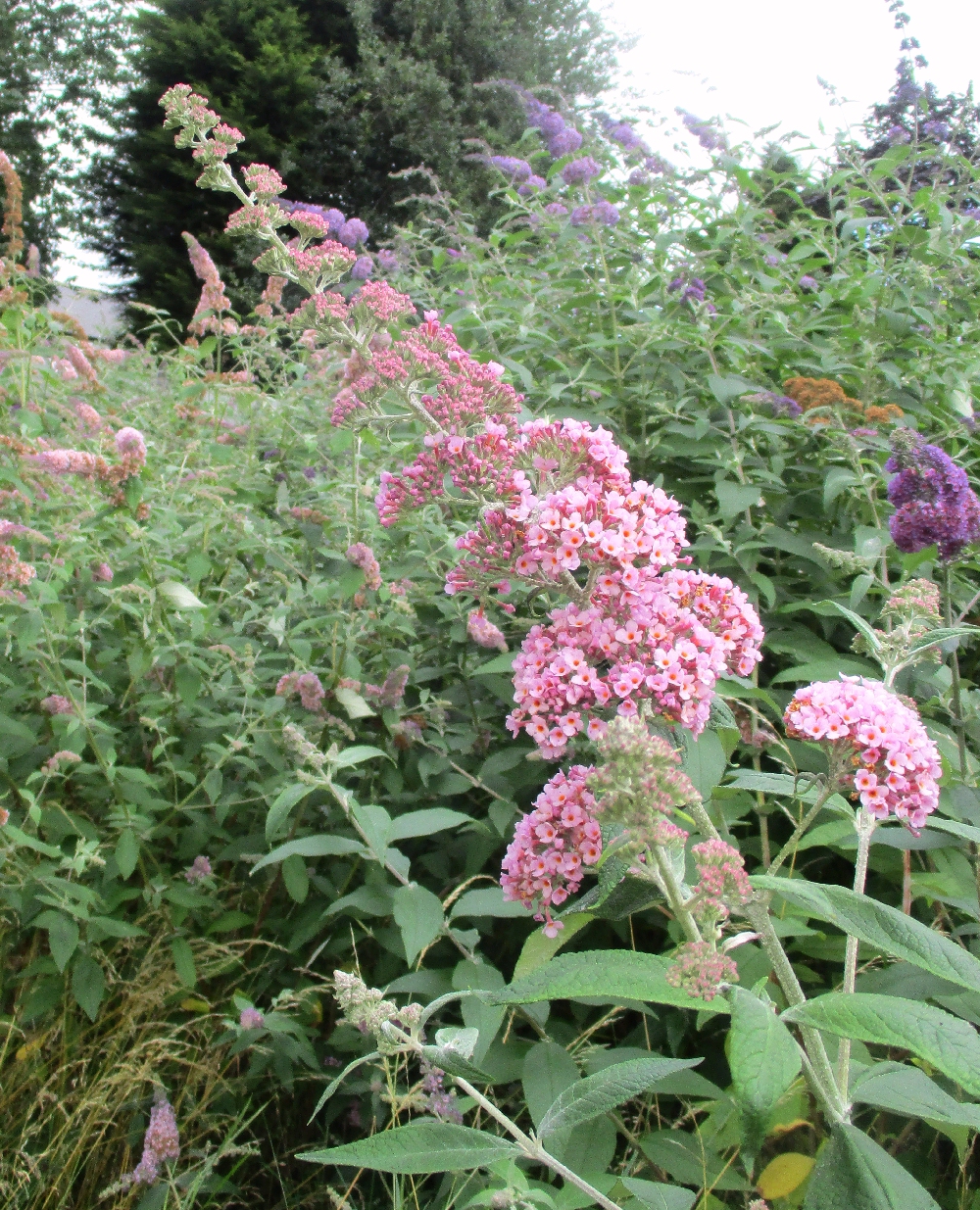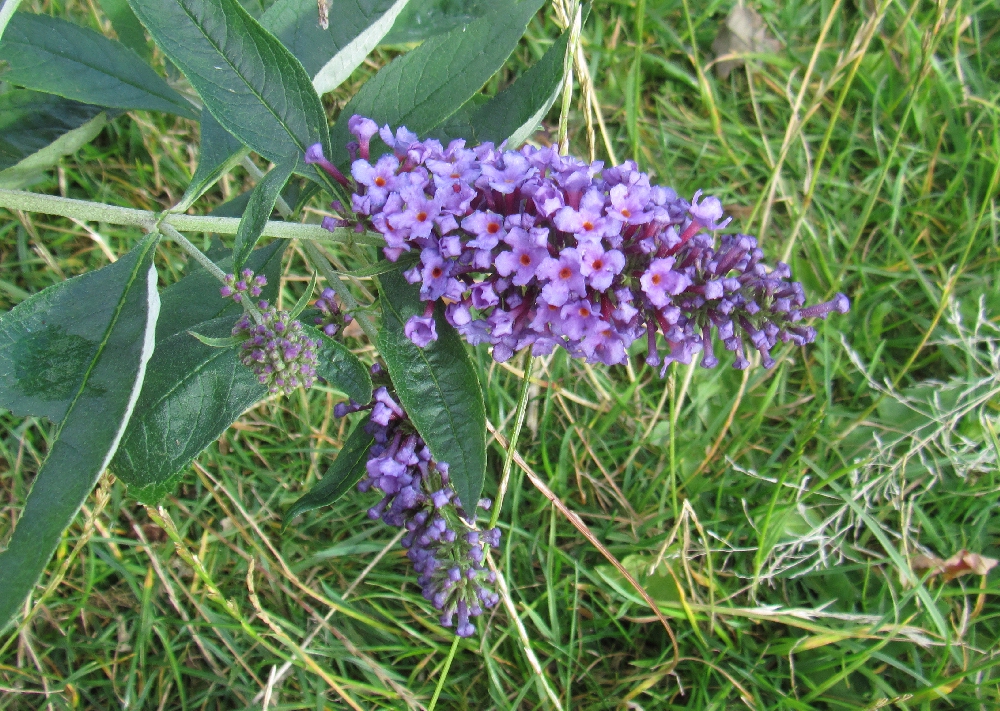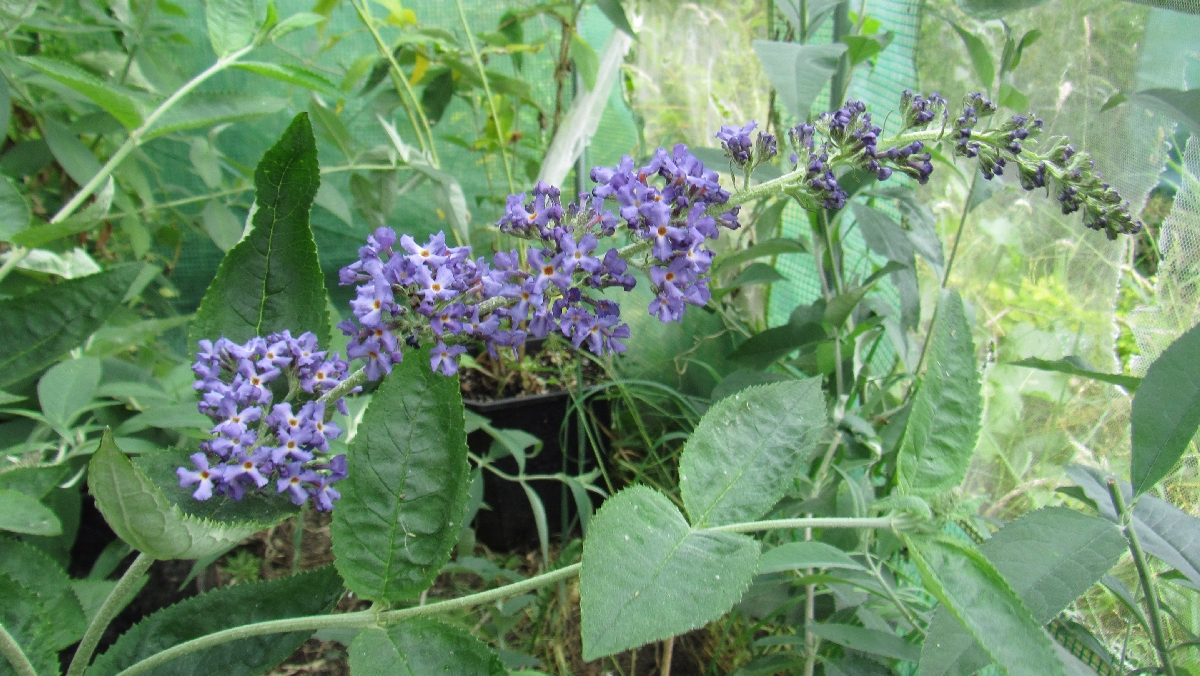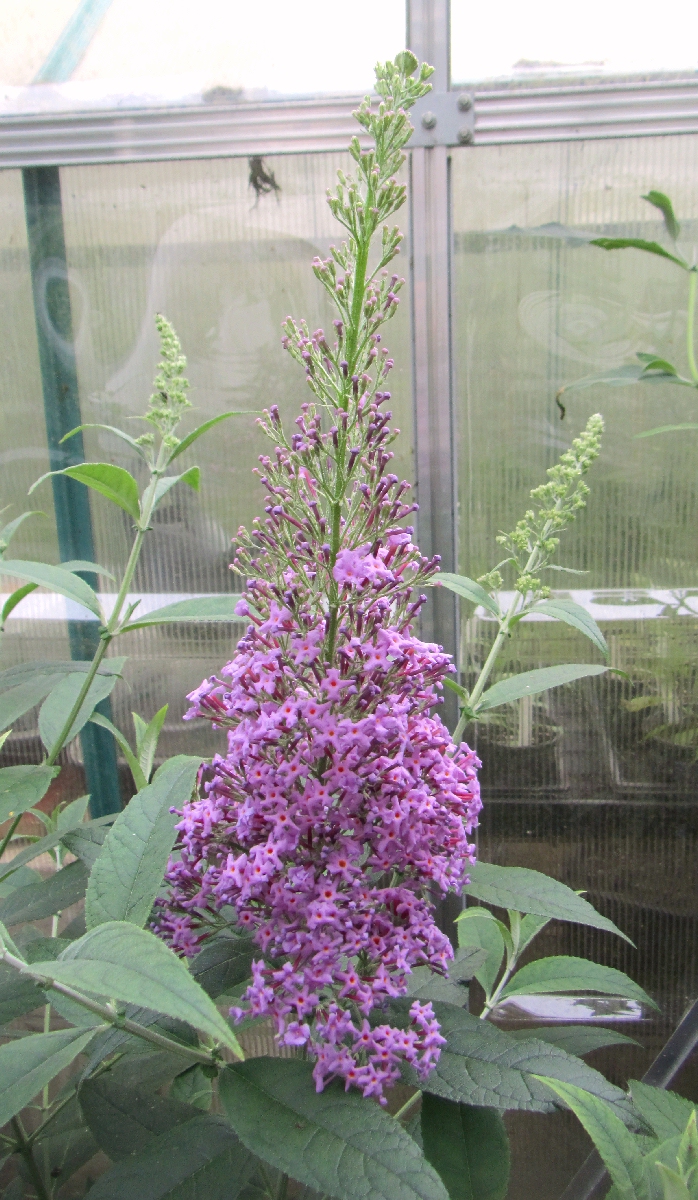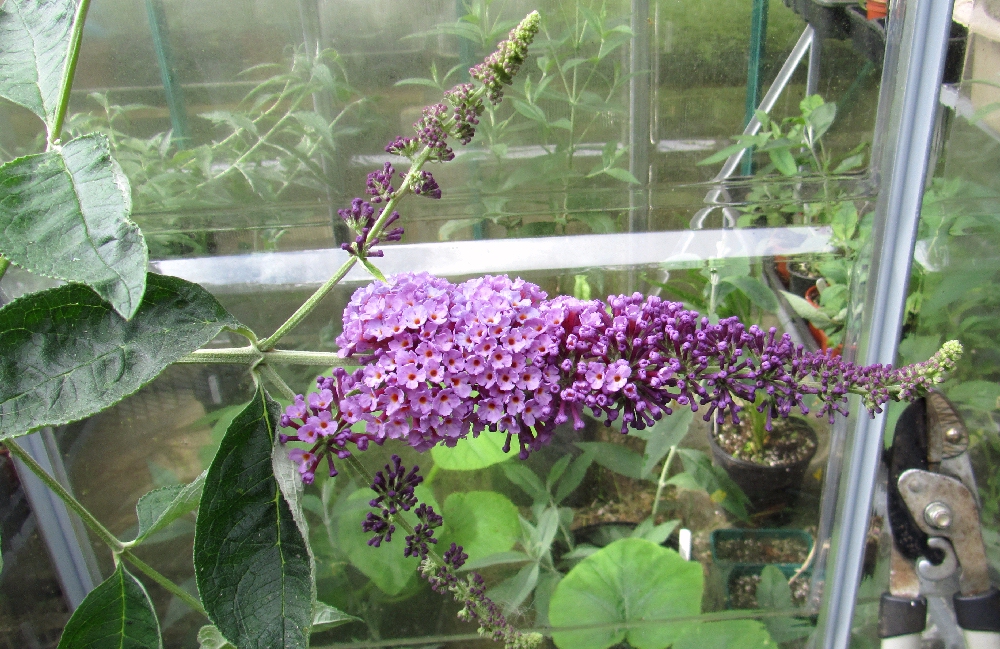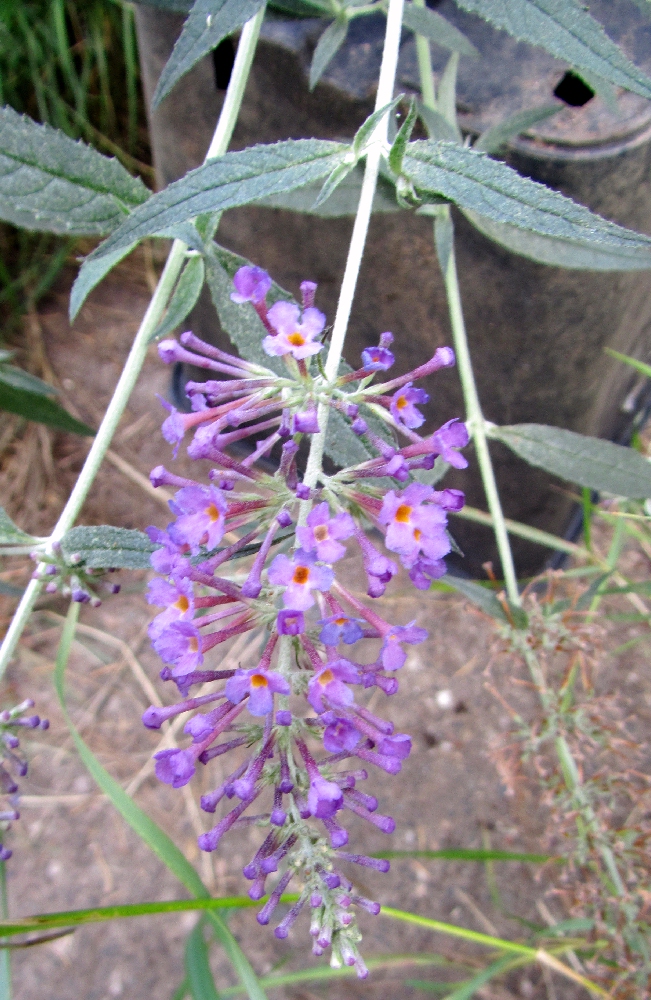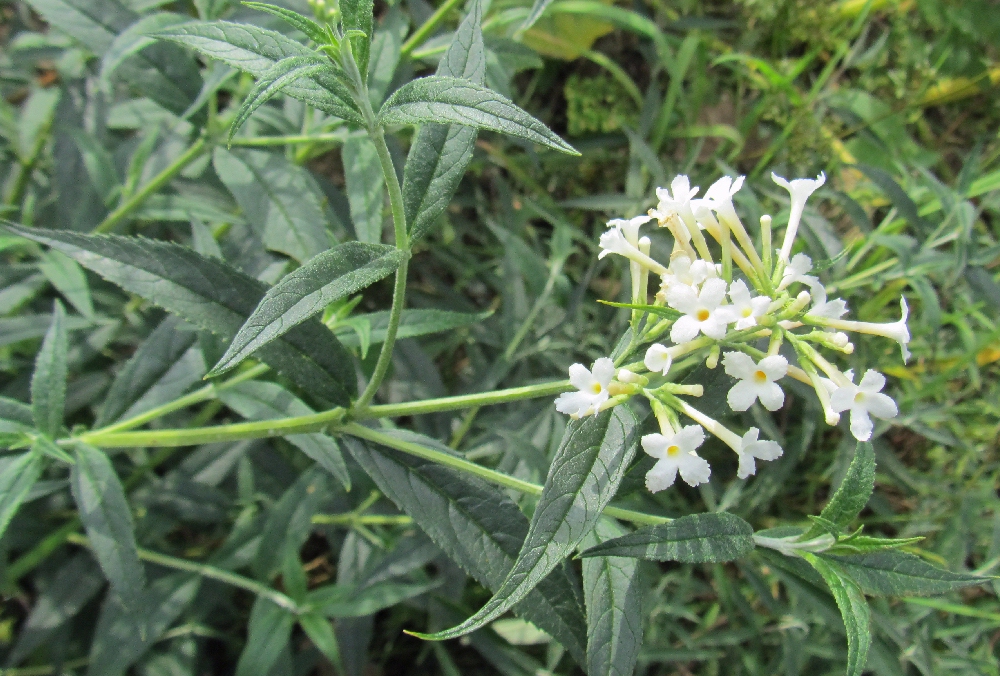Buddleja FLUTTERBY™ Series
Sponsor
Kindly sponsored by
The John Spedan Lewis Foundation
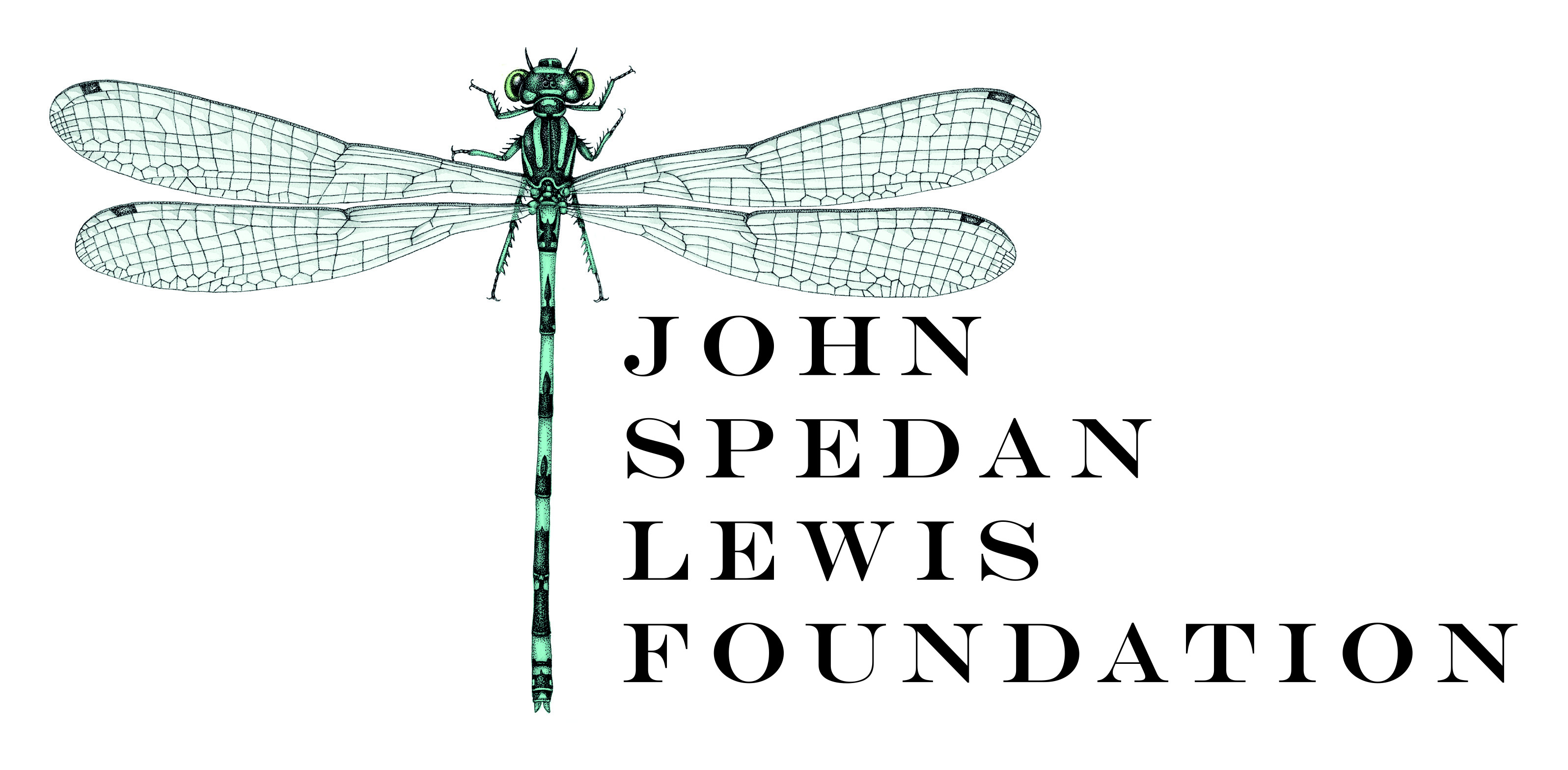
Credits
Andrew Large (2021)
Recommended citation
Large, A.T. (2021), 'Buddleja FLUTTERBY™ Series' from the website Trees and Shrubs Online (treesandshrubsonline.
Genus
Infraspecifics
Other taxa in genus
- Buddleja albiflora
- Buddleja alternifolia
- Buddleja araucana
- Buddleja asiatica
- Buddleja auriculata
- Buddleja caryopteridifolia
- Buddleja colvilei
- Buddleja cordata
- Buddleja crispa
- Buddleja crispa × lindleyana
- Buddleja curviflora
- Buddleja davidii
- Buddleja delavayi
- Buddleja fallowiana
- Buddleja fallowiana × davidii
- Buddleja forrestii
- Buddleja globosa
- Buddleja glomerata
- Buddleja japonica
- Buddleja lindleyana
- Buddleja LO AND BEHOLD® Series
- Buddleja longiflora
- Buddleja loricata
- Buddleja × luteolufaucia
- Buddleja macrostachya
- Buddleja marrubiifolia
- Buddleja megalocephala
- Buddleja 'Miss Ruby'
- Buddleja 'Morning Mist'
- Buddleja myriantha
- Buddleja New Dwarf Hybrids
- Buddleja nivea
- Buddleja officinalis
- Buddleja 'Orange Sceptre'
- Buddleja paniculata
- Buddleja × pikei
- Buddleja 'Pink Delight'
- Buddleja saligna
- Buddleja 'Salmon Spheres'
- Buddleja salviifolia
- Buddleja 'Silver Frost'
- Buddleja speciosissima
- Buddleja 'Summer Beauty'
- Buddleja virgata
- Buddleja × wardii
- Buddleja × weyeriana
- Buddleja × weyeriana Hybrids
- Buddleja 'Winter Sun'
A group of hybrids of diverse ancestry, developed by Peter Podaras and distributed by Ball Ornamental under the FLUTTERBY™ trade name (Ball Ornamentals 2011).
USDA Hardiness Zone 5-10
RHS Hardiness Rating H6
The FLUTTERBY™ Buddleja were developed by Peter Podaras in the 2000s while at Cornell University’s Department of Horticulture (New York, USA) and were patented in 2011, being introduced to commerce around the same time. Members of the series have been selected for their sterility or low fertility, and these plants are licensed for sale in some US jurisdictions where B. davidii is prohibited as an invasive (Oregon Department of Agriculture 2022). The FLUTTERBY™ series was initially marketed in by Ball Ornamentals (Ball Ornamentals 2011). Some, but not all, of the cultivars have been introduced to Europe.
They are a diverse group and involve several different Buddleja species in various combinations, and are divided into series by size: FLUTTERBY GRANDE™ are the largest shrubs; FLUTTERBY™ are the mid-sized plants; FLUTTERBY PETITE™ the smallest; and FLUTTERBY FLOW™ are extremely dwarf plants with a spreading or lax habit.
Although advertised as suitable for USDA zones 5–10 (Ball Ornamentals 2011), several are unlikely to be so tolerant of adverse winter conditions in areas with oceanic, rather than continental climates, and this is noted below.
As relatively new cultivars they have yet to be described in the horticultural literature in any detail; however, the US Plant Patents (PP numbers given below) provide detailed information on their form and their origins. Although innovative at the time of their introduction, the series has not been entirely successful: several FLUTTERBY™ cultivars have already disappeared from the catalogues and are becoming rare in cultivation. The smaller culivars in particular can be short-lived and prone to issues such as rotting off in winter (pers. obs.).
'Podaras #01'
Synonyms / alternative names
FLUTTERBY GRANDE™ VANILLA
RHS Hardiness Rating: H5
USDA Hardiness Zone: 6-9
A cross made by pollinating B. × weyeriana ‘Honeycomb’ with an unnamed selection of B. davidii. FLUTTERBY GRANDE™ VANILLA is a medium-sized shrub reaching a maximum height of 2 m with a similar spread. The flowers are a creamy white with a yellow eye and are mostly seed sterile. The foliage is grey-green. The plant is similar in form to other B. × weyeriana hybrids back-crossed with B. davidii selections. (US PP022080).
'Podaras #02'
Synonyms / alternative names
FLUTTERBY GRANDE™ SWEET MARMALADE
RHS Hardiness Rating: H3
USDA Hardiness Zone: 8b-10
A Buddleja crispa × B. marrubiifolia hybrid, FLUTTERBY GRANDE™ SWEET MARMELADE is one of the more unusual members of the series. An upright shrub up to 1.8 m in height with grey-green foliage, felted on the upper surface. The flowers are bright orange in colour and arranged in terminal and axillary panicles, which are rounded in shape and quite small. Flowering is continuous through the warmer months. Given the parentage, the plant is unlikely to be tolerant of wet winters or water-logged soils, and the patent only mentions cold-tolerance to 0ºC. (US PP022068).
'Podaras #03'
Synonyms / alternative names
FLUTTERBY GRANDE™ TANGERINE DREAM
RHS Hardiness Rating: H3
USDA Hardiness Zone: 8b-10
Raised from a cross of Buddleja marrubiifolia × B. alternifolia, FLUTTERBY GRANDE™ TANGERINE DREAM is a dense shrub up to 1.8 m in height with silvery foliage. The small terminal and axillary inflorescences are globular and consist of about 30 flowers, which are aromatic and dark orange in colour. The B. marrubiifolia parentage suggests the plant is probably intolerant of wet and damp conditions, and the patent only mentions cold-tolerance to 0ºC. (US PP022081).
'Podaras #04'
Synonyms / alternative names
FLUTTERBY GRANDE™ BLUEBERRY COBBLER
RHS Hardiness Rating: H4
USDA Hardiness Zone: 7-10
This complex hybrid arose from Buddleja weyeriana ‘Honeycomb’ crossed with an unnamed selection of B. marrubiifolia × (B. davidii × B. crispa). In form, the plant is not unlike other ‘Honeycomb’ seedlings such as FLUTTERBY GRANDE™ VANILLA and PEACH COBBLER, although a little more compact. The flowers are slightly fragrant and blue in colour, sometimes fading to cream after opening. Hardiness is unconfirmed, but most likely slightly less tolerant of wet and cold compared to other B. × weyeriana seedlings. (US PP022109).
'Podaras #05'
Synonyms / alternative names
FLUTTERBY GRANDE™ PEACH COBBLER
RHS Hardiness Rating: H5
USDA Hardiness Zone: 6-9
A seedling of B. × weyeriana ‘Sungold’ crossed with Buddleja ‘Pink Delight’, this plant is similar in form to other B. × weyeriana hybrids back-crossed with B. davidii selections. Its flowers are a soft-pink (although incorrectly described as violet-blue in the patent application), and are arranged in a large stepped panicle; the foliage is green-grey. Selected for an upright and dense growth habit, reaching about 2 m in height if regularly spring-pruned. It is free flowering during the late summer months and does not set seed. It has not officially been introduced into the European trade, but a few specimens have been cultivated in the UK (pers. obs.). (US PP022144).
'Podaras #06'
Synonyms / alternative names
FLUTTERBY™ PEACE
RHS Hardiness Rating: H5
USDA Hardiness Zone: 6-9
A hybrid of Buddleja davidii × B. alternifolia. Listed as a small- to medium-sized hybrid, the actual size is very small, reaching a height of only 30 cm and a spread up to 50 cm; it is reported to have a dense and compact habit. The flower panicles are small and the flowers unremarkable, being a dull mauve. The foliage is mostly opposite and much the same as B. davidii. It was introduced into Europe in 2012, but has not been widely cultivated and is now uncommon. In the author’s own garden, plants failed to establish and grow, and rotted off after two seasons (pers. obs.). (US PP022145).
'Podaras #07'
Synonyms / alternative names
FLUTTERBY FLOW™ MAUVE PINK
RHS Hardiness Rating: H6
USDA Hardiness Zone: 5-10
Described as a cross of two unnamed Buddleja davdii cultivars, FLUTTERBY FLOW™ MAUVE PINK (US PP022110) is atypical for that species. It forms a small spreading shrub up to 50 cm high with very small and narrow dark-green to grey-green leaves. The pink-mauve flowers are arranged in loose, open panicles and are unusual in having an abnormally long (up to 2 cm) corolla tube. The plant reportedly has extreme cold hardiness down to as low as –29ºC, and has proved longer lived than some of the series; however, it is prone to rotting off in damp conditions and requires some shelter from wind and rain to thrive. Flowering is a little later than most B. davidii cultivars, usually during August and September in the UK. Although never listed in European horticultural catalogues, FLUTTERBY FLOW™ MAUVE was briefly available mislabelled as B. davidii FREE PETITE® DARK PINK (pers. obs.).
'Podaras #08'
Synonyms / alternative names
FLUTTERBY PETITE™ BLUE HEAVEN
Buddleja davidii FREE PETITE® BLUE HEAVEN
RHS Hardiness Rating: H6
USDA Hardiness Zone: 6-10
Raised as a seedling from the self-pollination of an unnamed Buddleja davidii × B. alternifolia hybrid, this cultivar is a small shrub up to 1 m tall, more upright than others in the FLUTTERBY PETITE™ group. The foliage is distinctive: the leaves are ovate in shape and blue-green on on the upper surface. The inflorescence is long, and the flowers are blue with a paler centre surrounding a small yellow eye. Flowering time is normally from mid-summer onwards (US PP022069). One of the more attractive members of the series, FLUTTERBY PETITE™ BLUE HEAVEN is sold in Europe as B. davidii FREE PETITE® BLUE HEAVEN. It is fairly robust, but if allowed to obtain any height is prone to wind-rock and root damage, and is moderately both seed and pollen fertile (pers. obs.).
'Podaras #09'
Synonyms / alternative names
FLUTTERBY™ PINK
RHS Hardiness Rating: H5
USDA Hardiness Zone: 6-9
FLUTTERBY™ PINK is a seedling from an unnamed selection of B. davidii pollinated by a second unnamed B. davidii. It is a small-medium sized shrub, approximately 1.5 m tall when mature, with a smaller spread and an upright habit. The foliage is dark-green to greyish and fairly typical for the species. The inflorescences are large, wide and pointed panicles consisting of hundreds of bright pink-purple flowers; flowering is from mid to late summer. The plant appears to be moderately seed fertile. FLUTTERBY™ PINK is cultivated in Europe under the same trade name; it is a reliable plant here that may be treated in much the same way as any other B. davidii cultivar. (US PP022065).
'Podaras #10'
Synonyms / alternative names
FLUTTERBY PETITE™ DARK PINK
Buddleja davidii FREE PETITE® DARK PINK
RHS Hardiness Rating: H5
USDA Hardiness Zone: 6-9
This is a hybrid of the type (B. davdii × B. alternifolia) × (B. davdii × B. alternifolia) (US PP022066). The leaves are small, narrow and dark green. The inflorescences are short panicles with flowers a darker shade of pink-purple; flowering is around the same time as B. davidii: July and August in the UK. Initially a very small shrub, it does have the potential to grow to 1.5 m in height with a similar spread when fully established. It does not thrive in exposed locations and is prone to damage from string winds (pers. obs.). Available in Europe as part of the B. davidii FREE PETITE® range.
'Podaras #11'
Synonyms / alternative names
FLUTTERBY™ LAVENDER
From a cross of an unnamed Buddleja davidii × B. alternifolia hybrid with another unnamed hybrid of the same type (US PP022067). It is a smallish shrub, growing to just over 1 m tall with a similar spread, with olive-green foliage and a form more typical of a small B. davidii, and showing little evidence of the B. alternifolia heritage. The flowers are pale lavender-mauve and arranged in dense panicles 15–20 cm in length, and do appear to be seed-ferile. In the author’s garden, the plant formed a weak, sparse shrub, which was unable to cope with low temperatures (below –7ºC) (pers. obs.). FLUTTERBY™ LAVENDER is cultivated in Europe under the same trade name as in North America.
'Podaras #12'
Synonyms / alternative names
FLUTTERBY FLOW™ LAVENDER
FLUTTERBY PETITE™ LAVENDER
Buddleja davidii FREE PETITE® LAVENDER FLOW
RHS Hardiness Rating: H5
USDA Hardiness Zone: 7-9
FLUTTERBY FLOW™ LAVENDER derived from a pollination of a Buddleja davidii × B. alternifolia hybrid by an unnamed selection of B. davidii (US P022098). The plant is extremely small, not usually exceeding 30 cm in height, with a lax and spreading habit more suited to hanging baskets or containers than the border or shrubbery. The leaves are small, narrow and grey-green. The flowers are arranged in small pendulous panicles up to 15 cm in length, and are of an indifferent shade of lavender. The plant is deciduous and dies back over winter, and is therefore prone to rotting off. Even containerised, it can prove short-lived and should be treated accordingly, rather than as a permanent shrub (pers.obs.). Sold as one of the B. davidii FREE PETITE® range in Europe.
'Podaras #13'
Synonyms / alternative names
FLUTTERBY PETITE™ TUTTI FRUITI PINK
Buddleja davidii FREE PETITE® TUTTI FRUITI
RHS Hardiness Rating: H5
USDA Hardiness Zone: 6-9
This is a hybrid derived from crossing an unnamed B. davdii × B. alternifolia selection with an unnamed B. davdii cultivar (US PP022177). The leaves are elliptic and a mid-green, and are mostly lost over the winter in cooler climes. The inflorescences are short dense panicles with flowers of a rich pink-purple; it flowers in the summer months and does not set seed. A very small shrub up 40 cm height and spread, it does not grow well without shelter, has a tendency to rot off over winter, and can be short lived; it’s possibly more suited to container growing (pers. obs.). Available in Europe as part of the B. davidii FREE PETITE® range.
'Podaras #14'
Synonyms / alternative names
FLUTTERBY PETITE™ FUCHSIA
RHS Hardiness Rating: H6
USDA Hardiness Zone: 5-9
Also an interspecific hybrid of the type (B. davdii × B. alternifolia) × B. davdii, FLUTTERBY PETITE™ FUCHSIA has not been made widely available, and possibly is no longer in cultivation. It is described as a free-flowering compact shrub with a spreading habit. It has violet-coloured flowers with a white centre and grey-yellow throat; the flowers are arranged in short, terminal panicles. It is reportedly very hardy. (US PP022367).
'Podaras #15'
Synonyms / alternative names
FLUTTERBY PETITE™ SHOW WHITE
Buddleja davidii FREE PETITE® SNOW WHITE
RHS Hardiness Rating: H5
USDA Hardiness Zone: 6-9
Another hybrid of (B. davdii × B. alternifolia) × B. davdii, FLUTTERBY PETITE™ SNOW WHITE (US PP022243) is a small shrub up to 50 cm tall with dark-green, narrow leaves. The inflorescences are small, open, terminal panicles, made up of 20 or so long-tubed white flowers. Flowering is unreliable and very late in the season, from early autumn (September in the UK). The plant does not set seed, but in this author’s garden, FLUTTERBY PETITE™ SNOW WHITE was short-lived, dying during its fourth winter (pers.obs.). Introduced into Europe under the trade-name B. davidii FREE PETITE® SNOW WHITE.
'Podaras #16'
Synonyms / alternative names
FLUTTERBY PETITE™ PINK
An interspecific hybrid of B. davdii × B. alternifolia, FLUTTERBY PETITE™ PINK is not widely propagated. The name is unfortunately similar to others in the series, which could have caused confusion. It is described as a free-flowering compact shrub, somewhat taller than the other FLUTTERBY PETITE™ cultivars, with a spreading habit. It has pink-violet flowers with a yellow throat; the flowers are arranged in terminal panicles. (US PP022108).

